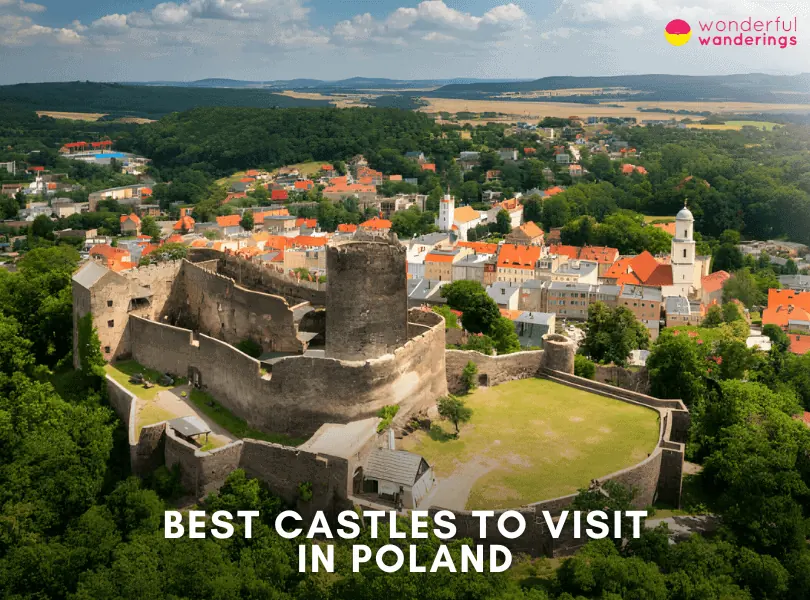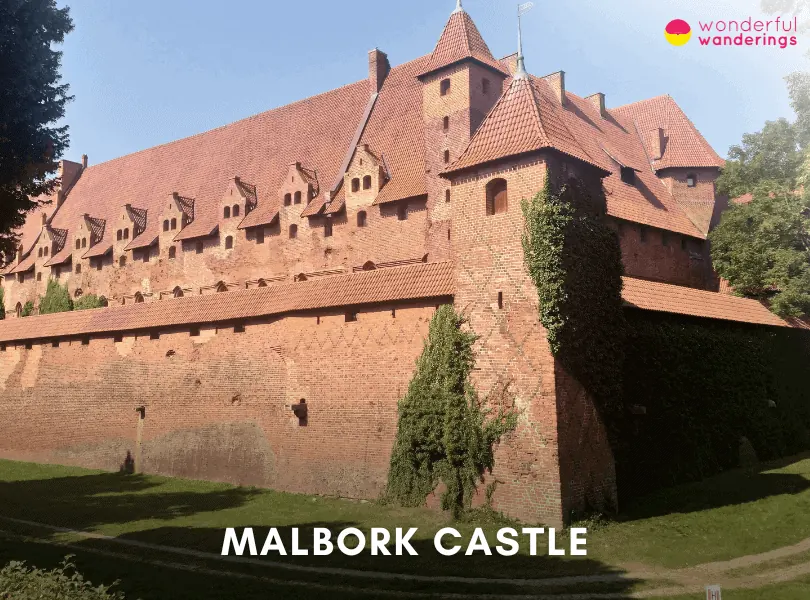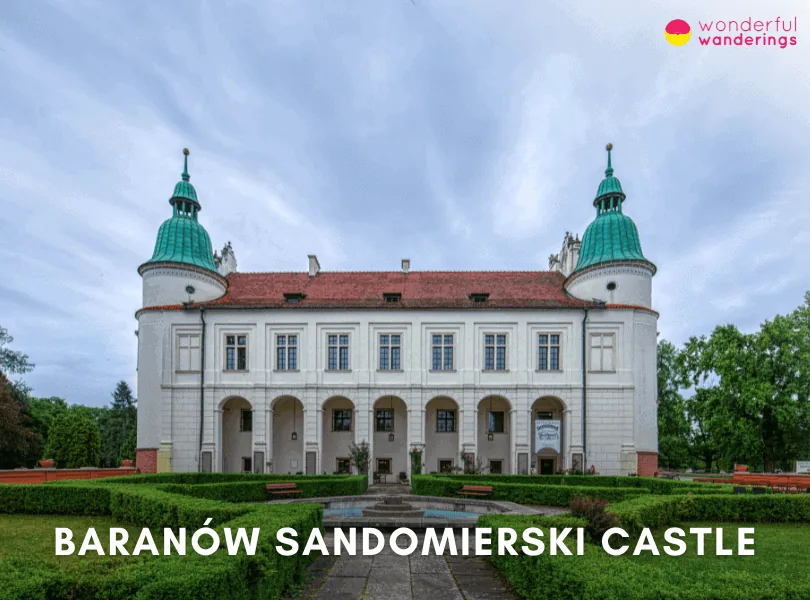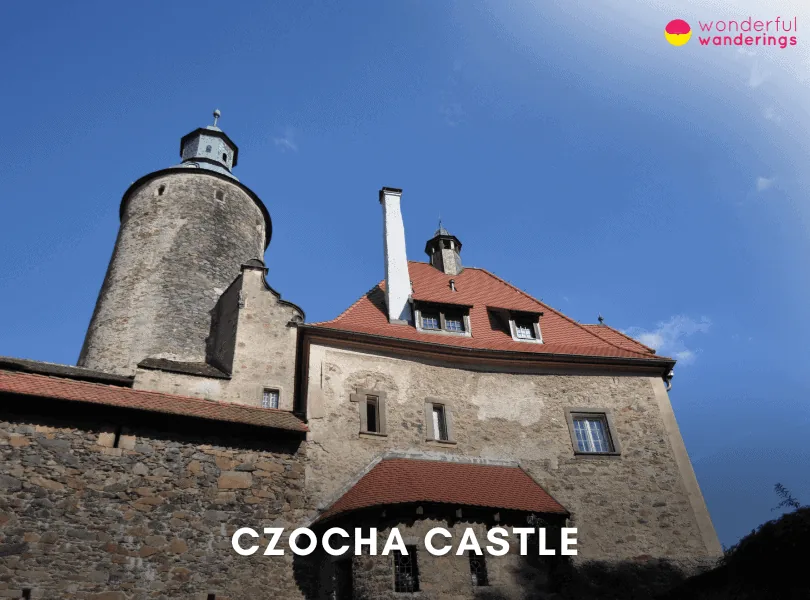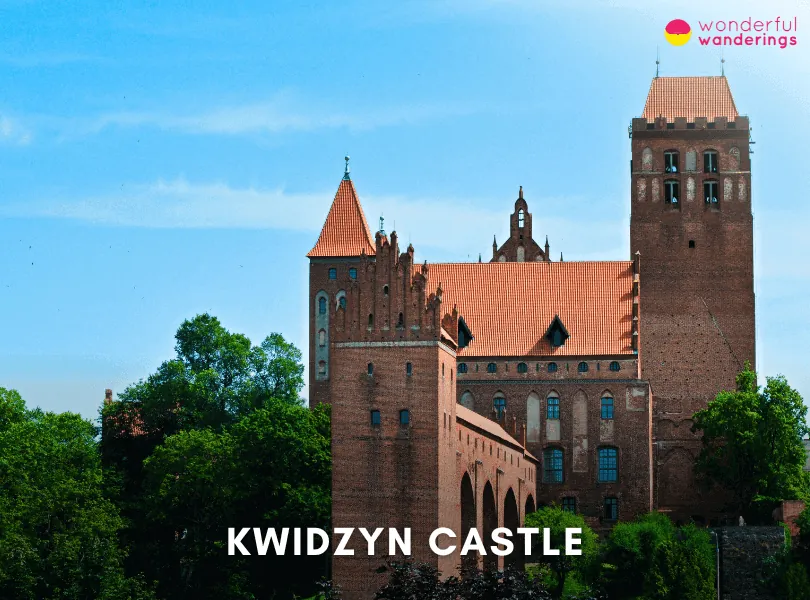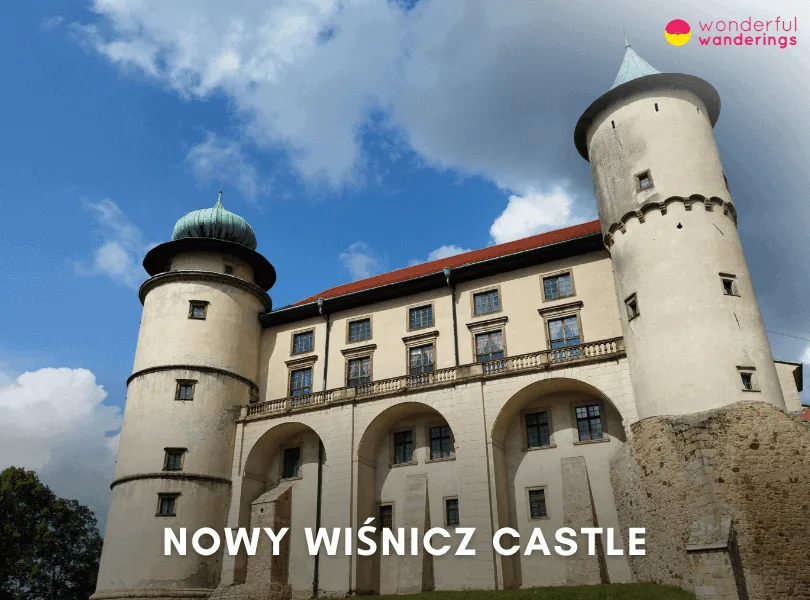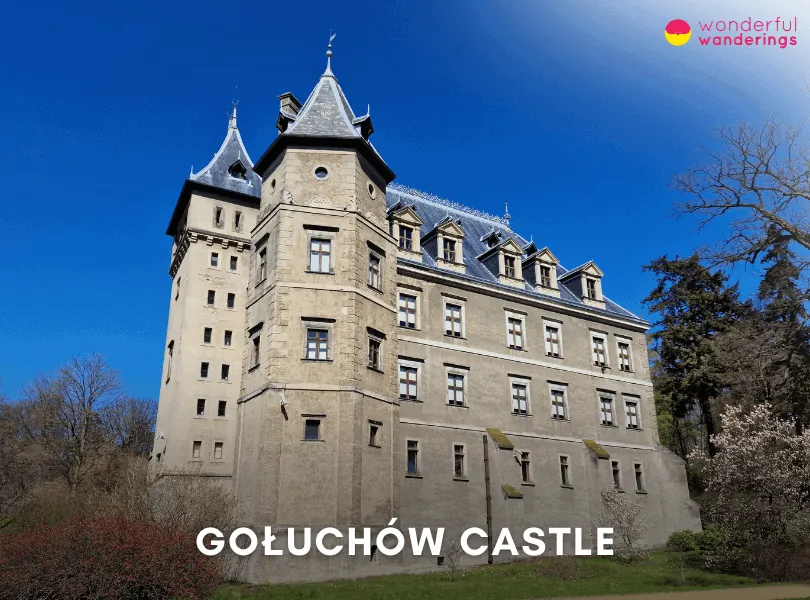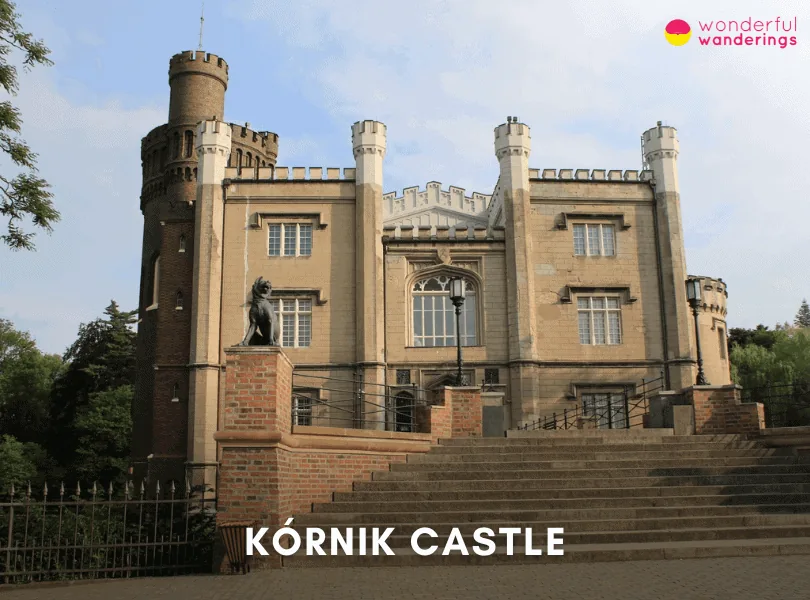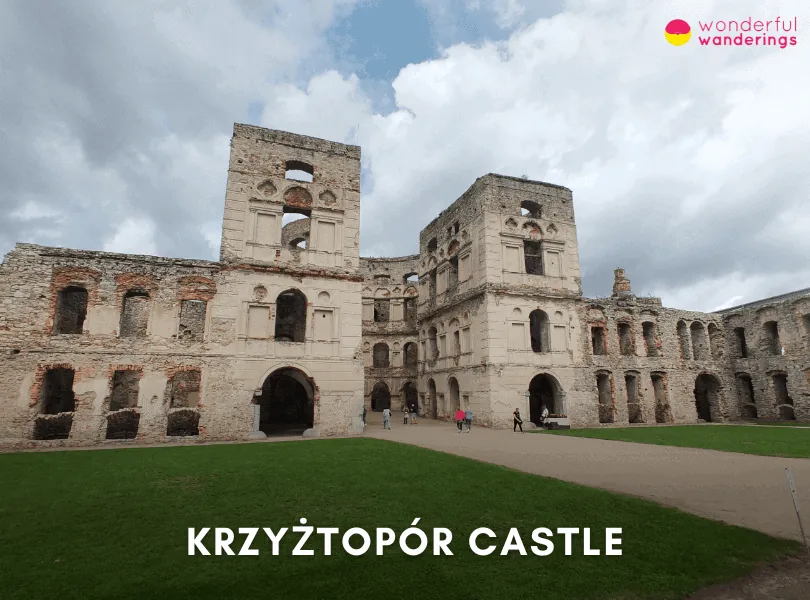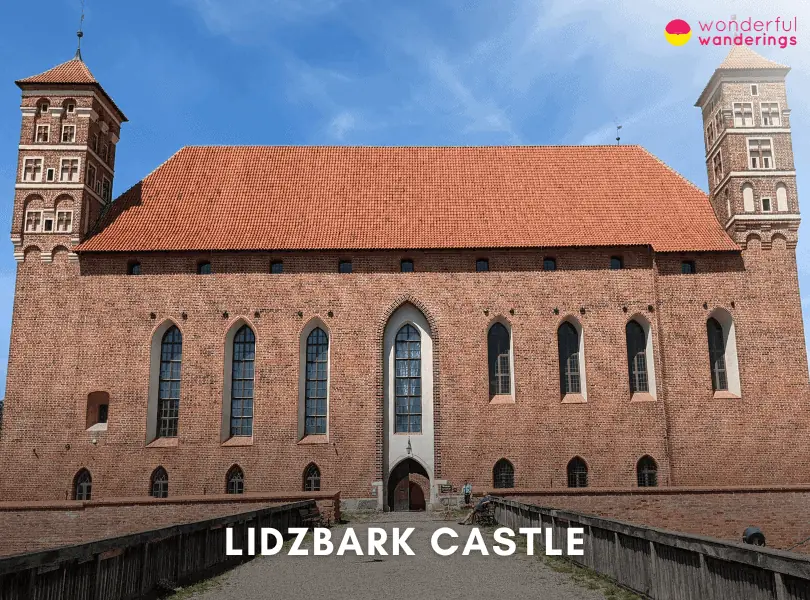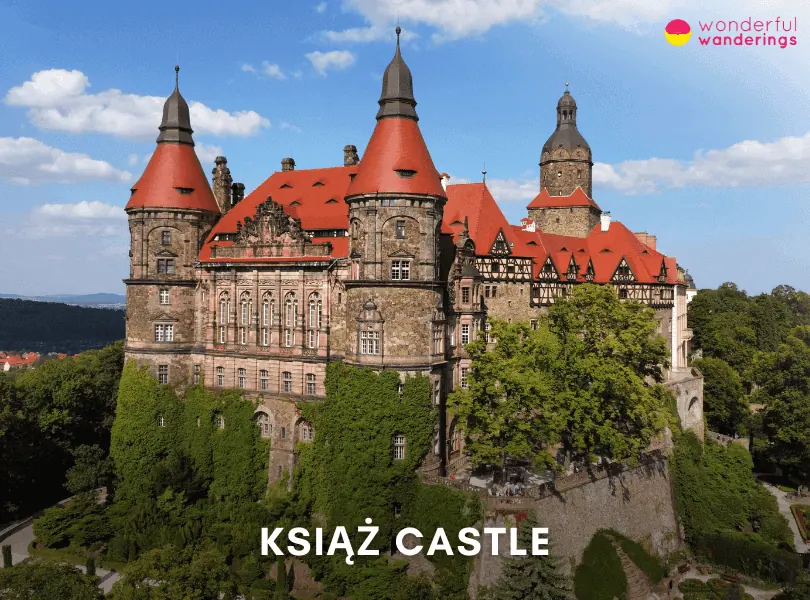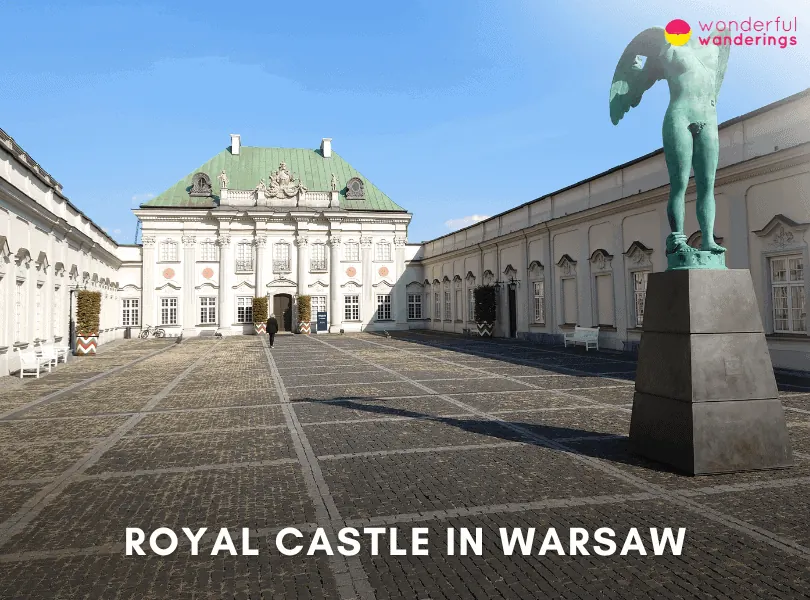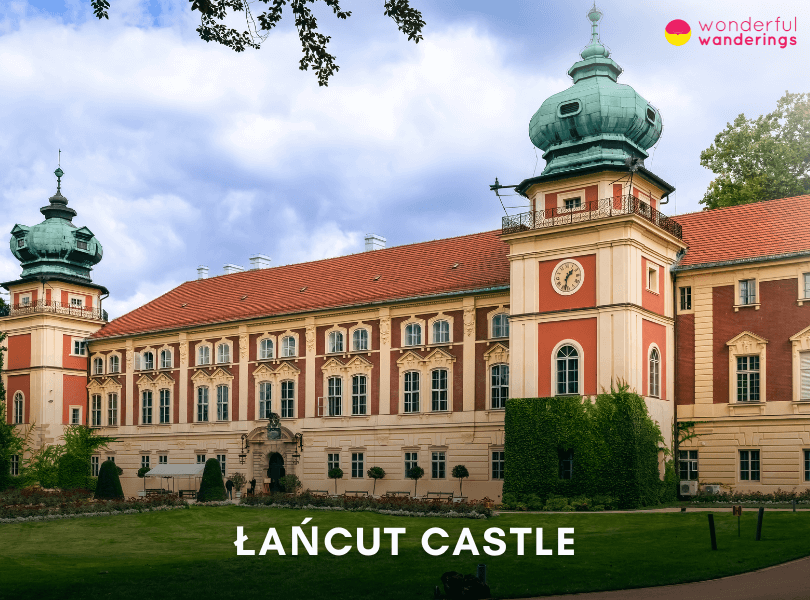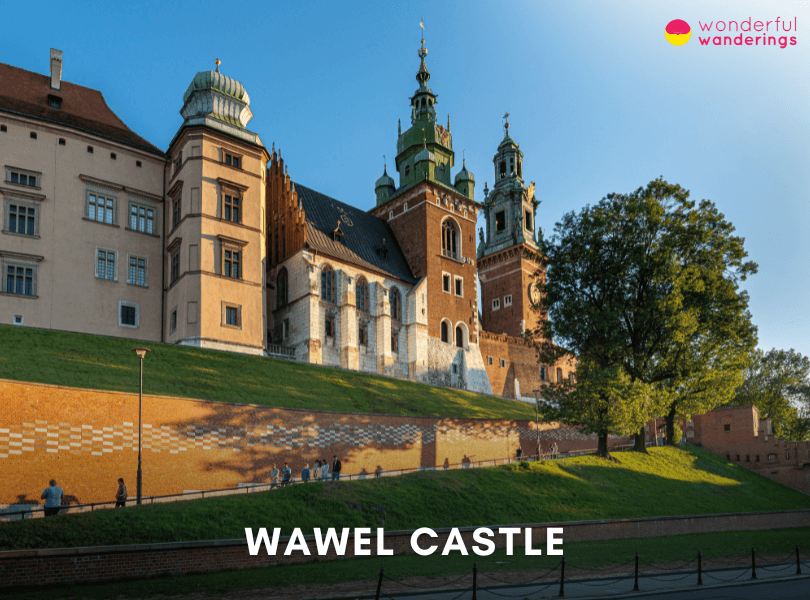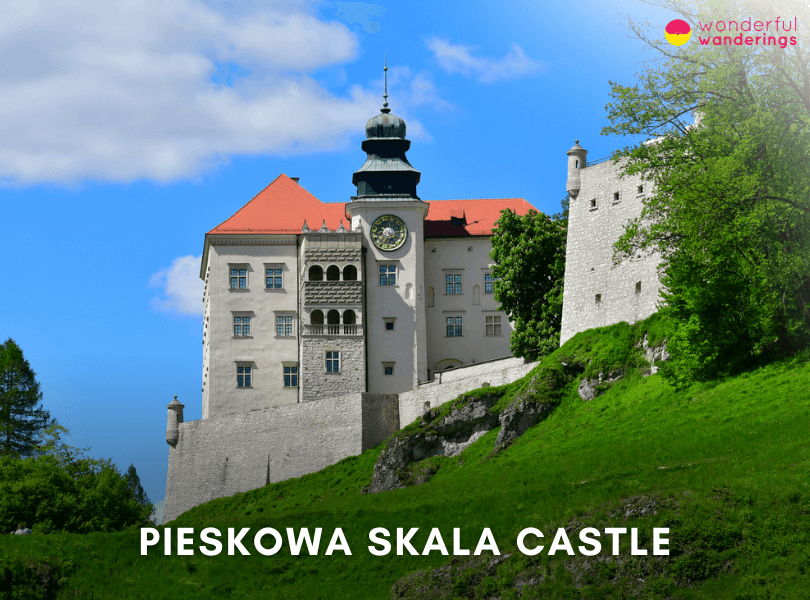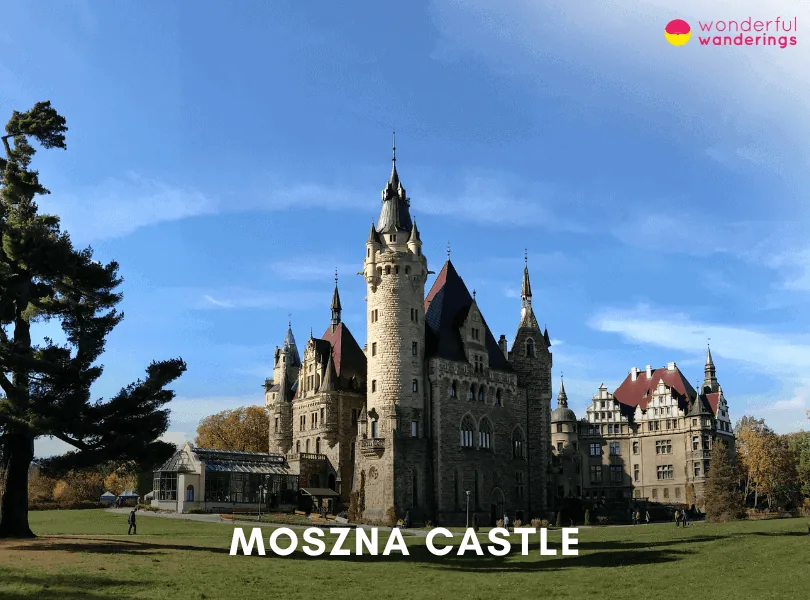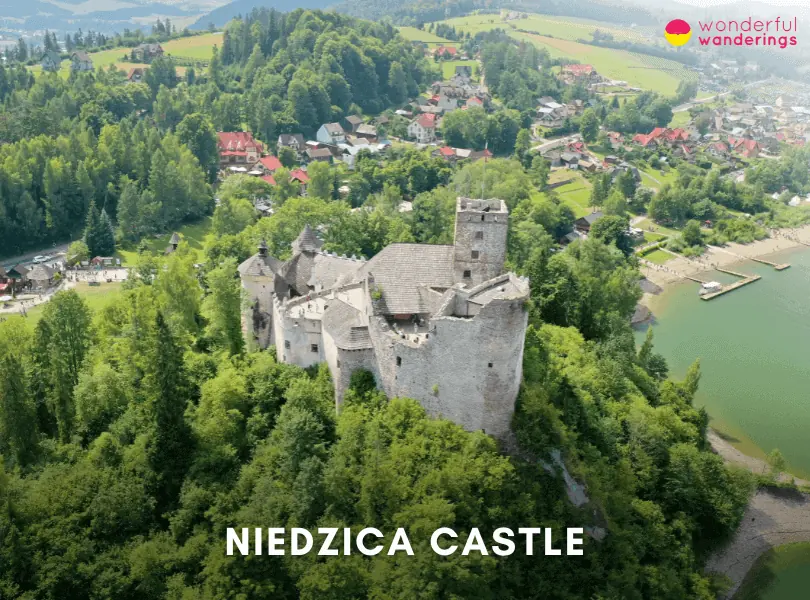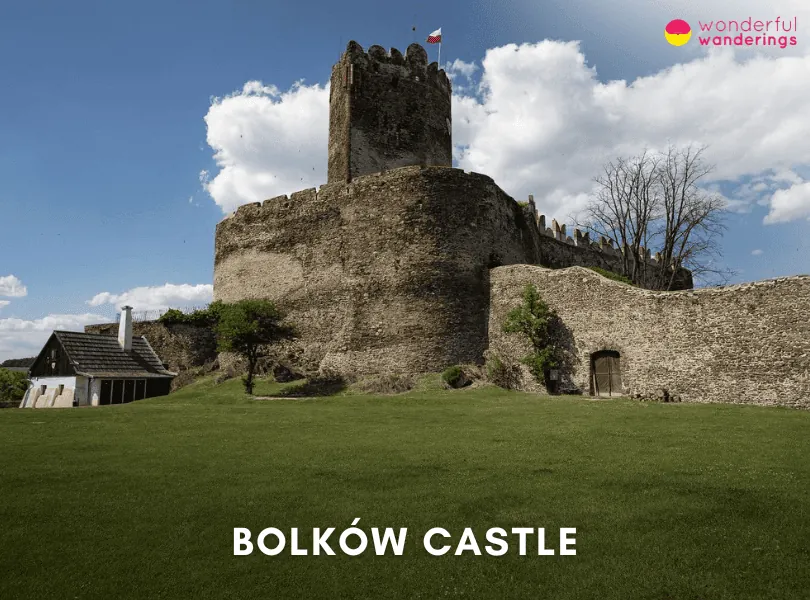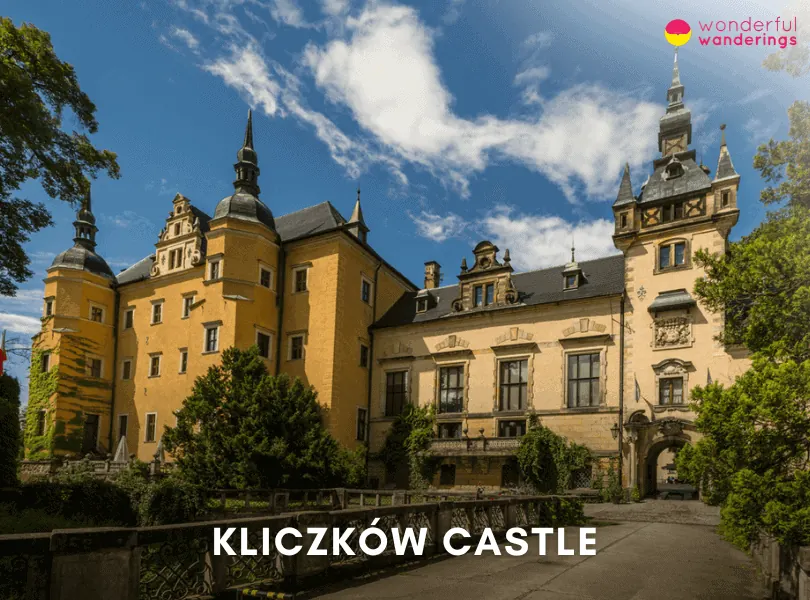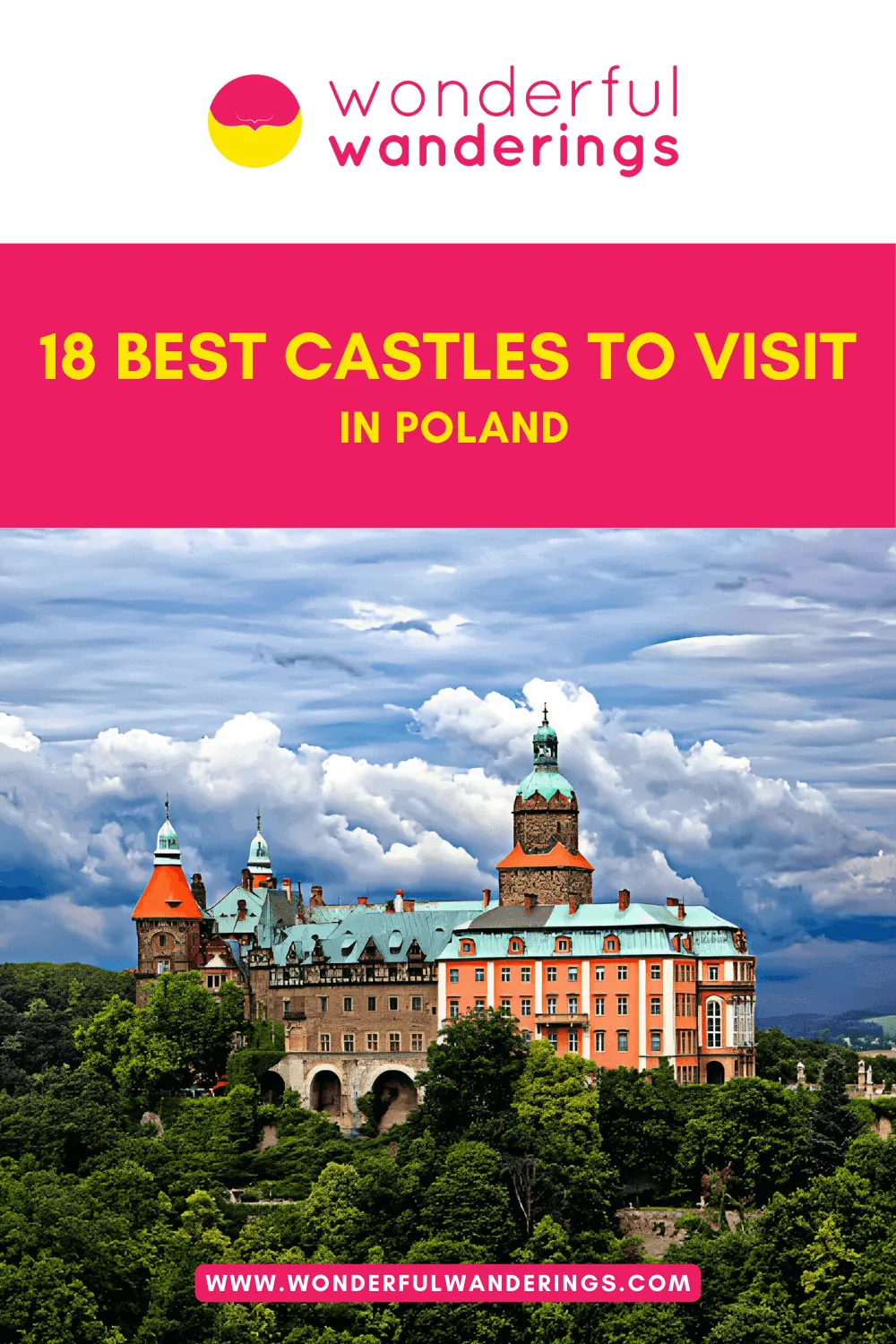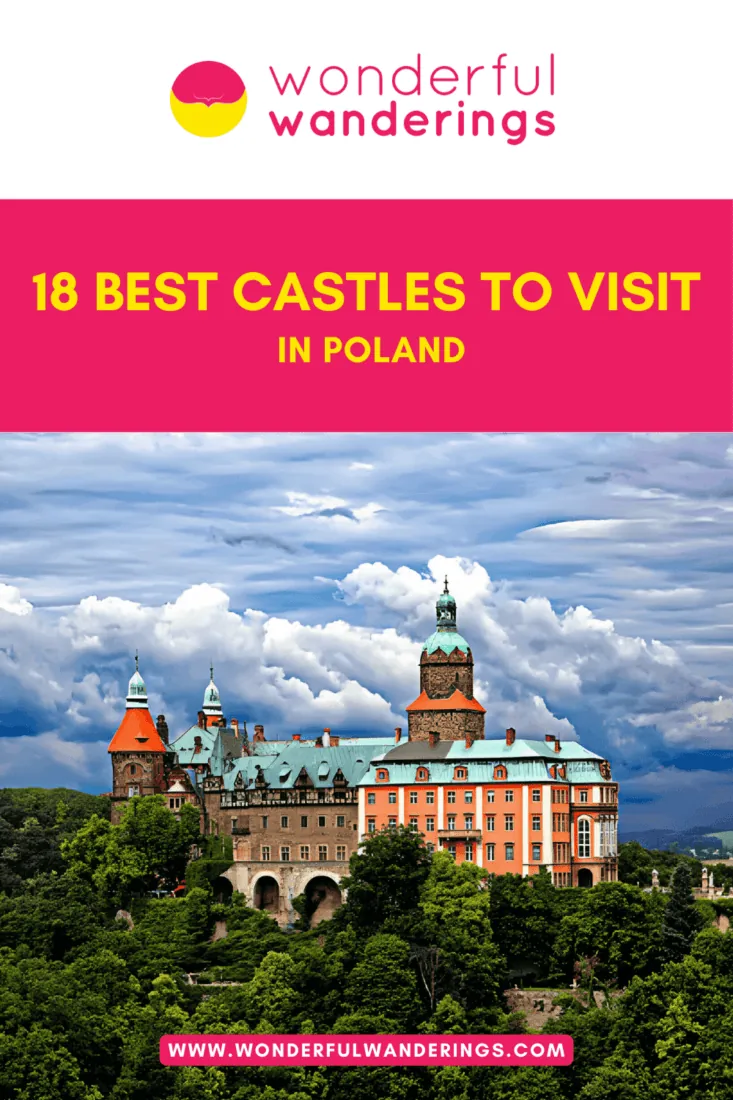Poland, a country steeped in history and architectural grandeur, enchants travelers with its majestic castles, each narrating a unique chapter of the nation’s past. Malbork Castle, the world’s largest brick Gothic fortress, is a testament to medieval might and the ingenuity of the Teutonic Order. Baranów Sandomierski Castle, with its Renaissance elegance, is often dubbed the “Little Wawel” offering a glimpse into Poland’s aristocratic heritage opulence. Czocha Castle, perched on a rocky promontory, has evolved from a medieval bastion to a romantic Gothic-Renaissance residence, echoing tales of power and transformation. Kwidzyn Castle, a remarkable example of Teutonic architecture, features a unique dansker and a rich history as a chapter house for the Pomesanians. Gołuchów Castle is known for its Renaissance beauty and houses an impressive art collection, inviting visitors to explore its cultural depths. These castles, with their alluring blend of history and architecture, are jewels in Poland’s crown, waiting to be discovered.
Listed below are the best castles to visit in Poland.
- Malbork Castle. Malbork Castle is a 13th-century Teutonic fortress located in Malbork, Poland, near the city of Gdańsk. It was built by the Teutonic Order and served as the residence of Grand Masters until the 15th century, later becoming Poland’s royal residence. It is best visited in summer and requires purchased tickets. Tours last 3 hours, with options for guided or audio-guided self-guided tours. Photography is allowed and the site has some wheelchair/stroller accessibility challenges due to its historic nature. Food is available onsite.
- Baranów Sandomierski Castle. Baranów Sandomierski Castle is a 16th-century Mannerist architectural castle in Baranów Sandomierski, Poland, near Tarnobrzeg. It was built for the Leszczyński family by architect Santi Gucci and later rebuilt by Tylman van Gameren. Summer is the best time to visit and tours run a half to a full day, with guided or solo exploration available. Photos are permitted, pets are allowed and there is an onsite restaurant. The site is wheelchair/stroller accessible.
- Czocha Castle. Czocha Castle is a 13th-century defensive castle located in Sucha, southwestern Poland, near Wrocław. It was ordered and built by Wenceslaus I of Bohemia and inhabited by various groups over time, including Greek refugees. The Polish Army took over in 1952. Visit in January. Tours take 20 minutes, guided or solo. Photos are permitted and pets are allowed in courtyards. The site has limited wheelchair/stroller accessibility.
- Kwidzyn Castle. Kwidzyn Castle is a 14th-century Teutonic Knights brick gothic castle in Kwidzyn, northern Poland, near Gdańsk. It was built as a chapter house for Pomesanians and inhabited by various groups like the Bishops of Pomerania. Tours take 3.5 hours, guided or solo, with audio guides. Photography permitted, pets prohibited. The site is wheelchair/stroller accessible.
- Nowy Wiśnicz Castle. Nowy Wiśnicz Castle is a 14th-century medieval castle in southern Poland near Bochnia, rebuilt in the Baroque style in the 17th century. It was the residence of Polish noble families over time. Tours take 1-2 hours, photography permitted. The castle has a café, wheelchair/stroller accessible and pets are prohibited. Guided tours or audio guide self-guided tours are available.
1. Malbork Castle
Malbork Castle, a 13th-century Teutonic fortress, is in Malbork, Poland. The nearest city to Malbork Castle is Gdańsk, 60 kilometers (37 miles) away. The castle was built in the 13th century by the Teutonic Order and served as the residence of the Grand Masters of the Teutonic Order and the authorities of Teutonic Prussia until the mid-15th century. It later became the residence of Poland’s kings from 1457 to 1772. The best time to visit Malbork Castle is in summer when the weather is most favorable. The castle’s Green Route is open for free on Mondays only. Tickets cost €23 ($25, £19) and are available on-site and online. A visit to the main sights at Malbork Castle takes 3 hours. Both guided and self-guided tours with an audio guide are available depending on personal preference. Photography is permitted inside the castle. The castle is accessible to wheelchairs and strollers to a certain extent, but visitors should be aware that the site’s historical nature may present some challenges. There are food options available. The house rules of Malbork Castle require visitors to follow a guide or use an audio guide for security reasons.
2. Baranów Sandomierski Castle
Baranów Sandomierski Castle, a Mannerist architectural gem, is in the town of Baranów Sandomierski in south-eastern Poland. The nearest city is Tarnobrzeg, 8.6 kilometers (5.3 miles) away. The castle’s history dates back to 1591, when construction began and was completed in 1606. Santi Gucci is credited as the architect and it was later rebuilt by Tylman van Gameren. The castle was built for the Leszczyński family and owned by several families, including the Dolański family, until World War II. The best time to visit is in summer when the weather is most favorable. The castle grounds are explored for free and the interior requires a ticket costing €10 ($11, £9). Tickets are purchased on-site. A visit to the main sights of the castle takes half a day to a full day. Guided tours offer detailed insights and solo exploration allows a more flexible schedule. Photography is permitted inside the castle. The castle houses the Restauracja Magnacka, which serves traditional Polish cuisine. Pets are allowed and the castle is accessible for wheelchairs and strollers. The house rules include respecting the historical site and not causing any damage.
3. Czocha Castle
Czocha Castle, a defensive structure in the village of Sucha, Lower Silesian Voivodeship, southwestern Poland, is perched on gneiss rock near Lake Leśnia. It is 145 kilometers (90 miles) from Wrocław, the nearest city. The castle’s history traces back to the mid-13th century when Wenceslaus I of Bohemia ordered its construction. Konrad von Wallhausen, Bishop of Meissen, first took possession of the castle in 1253. It housed different inhabitants, including refugees from Greece in the late 1940s and early 1950s. The Polish Army took over the castle in 1952. The best time to visit Czocha Castle is in January. The castle courtyard visits are free and the interior requires a ticket costing €30 ($33, £25), available on-site. A tour of the main sights takes 20 minutes. Guided tours are available. Photography is allowed, enhancing the experience for visitors. The castle has a restaurant serving Polish cuisine. Pets are allowed in the castle courtyards, but certain breeds must wear a muzzle. The castle is not fully accessible for wheelchairs and strollers. Visitors are expected to respect the historical site and its artifacts.
4. Kwidzyn Castle
Kwidzyn Castle, a large brick gothic structure in Kwidzyn, Poland, stands as a testament to the architectural prowess of the Teutonic Knights. The castle is in the Pomeranian Voivodeship. The nearest city to Kwidzyn Castle is Gdansk, 100 kilometers (62 miles) away. The castle’s history dates back to the 14th century when it was built by the Teutonic Knights as a chapter house for the Pomesanians. It was home to different occupants, including the Bishops of Pomesania within the Order. The best time to visit Kwidzyn Castle is in summer from 9.00 AM to 5.00 PM. The castle grounds are visited for free and a ticket costing €23 ($25, £19) is required to explore the castle with an audio guide. Tickets are purchased on-site or in advance. A visit to the main sights at Kwidzyn Castle takes 3.5 hours. Guided tours are available and visitors can explore the castle solo. Photography is permitted inside the castle. The town of Kwidzyn offers different food options. Pets are not allowed in the castle and it is wheelchair and stroller accessible. Visitors are expected to respect the historical significance of the castle and adhere to the guidelines provided by the castle management.
5. Nowy Wiśnicz Castle
Nowy Wiśnicz Castle is a 14th-century medieval castle located in the village of Stary Wiśnicz in southern Poland, 6 kilometers (4 miles) north of Bochnia. The castle was originally built by Jan Kmita and later rebuilt in the Baroque style by Stanisław Lubomirski in the 17th century. Nowy Wiśnicz Castle was the residence of different Polish noble families over the centuries. The best time to visit the castle is April-October. The castle grounds and gardens are explored for free, while tickets to tour the interior exhibits cost €10 ($11, £9). Tours take 1-2 hours and photography is permitted inside. The castle has a café onsite and is wheelchair and stroller accessible, though pets are prohibited. Guided tours are recommended to learn about history and architecture, but independent exploration with audio guides is available. House rules include no food or drinks near exhibits, no touching displays and no loud noises or running to preserve fragile historical elements.
6. Gołuchów Castle
Gołuchów Castle is an elegant early Renaissance castle built in 1550-1560 located in the village of Gołuchów, 15 kilometers (9 miles) northeast of Kalisz, Poland. The castle was a defensive fortress expanded into a palatial residence by the aristocratic Leszczyński family in the 1600s and it was lavishly restored by Jan Działyński for his wife Izabela in the late 1800s before becoming part of Poland’s National Museum in 1952. The best time to visit the castle and its sprawling 150-hectare (371-acre) gardens and park is May-October, free to explore year-round. Interior exhibits like Renaissance tapestries are seen via €4 ($5, £3) general admission tickets purchased on-site in 1-2 hours. Guided tours and photos are available inside the wheelchair-accessible castle, with a restaurant on the grounds serving Polish cuisine. Pets are prohibited, while food, drinks, loud noises and touching displays are discouraged to preserve the artifacts.
7. Kórnik Castle
Kórnik Castle is a 14th-century castle located in the town of Kórnik, Poland, 25 kilometers (16 miles) southeast of Poznań, that has undergone different expansions and architectural styles over the centuries under different noble owners like the Górkas, Czarnkowskis, Grudzińskis and Działyńskis, before becoming the property of the Polish Academy of Sciences; its current English Gothic Revival structure dates to the mid-1800s design by Karl Friedrich Schinkel. The best time to visit the castle is April-October when the weather is nice. Visitors can explore portions of the castle courtyards and gardens for free, while interior access costs €5 ($6, £5) and takes 1-2 hours to tour highlights like the museums and rooms, with guided tours providing more detail; the onsite Castle Café offers refreshments. Photography is allowed inside the wheelchair-accessible castle, which is pet-free and has house rules like supervising children, not touching displays and no food near exhibits.
8. Krzyżtopór Castle
Krzyżtopór Castle, in Ujazd village, Iwaniska commune, Opatów County, Świętokrzyskie Voivodeship, in southern Poland, is a 17th-century architectural marvel. The nearest city to Krzyżtopór Castle is Sandomierz, 35 kilometers (22 miles) away. The castle’s history is rich, with construction beginning in 1621 and completed around 1644 by the Polish nobleman Krzysztof Ossoliński. Several noble families, including the Morsztyns, the Wiśniowieckis and the Pacs, resided in the castle’s best-preserved western wing, but the castle otherwise remained in ruins. The best time to visit Krzyżtopór Castle is during the peak season from April to August. Visitors can explore the grounds, ascend the turrets and ponder its remarkable history for free. Tickets for a more comprehensive visit cost €2.5 ($3, £2) during the peak season and €2 ($2.5, £1.8) in the off-season. Tickets can be purchased on-site. A visit to the main sights at Krzyżtopór Castle takes 1.5 to 3 hours. While guided tours are available during the high season, visitors can explore the castle independently. Photography is permitted inside the castle. There are no specific restaurants or cafés inside the castle, but food options are available in the nearby town of Ujazd. Pets are allowed in the castle. The castle is not fully wheelchair and stroller accessible due to its historical structure. The house rules of Krzyżtopór Castle include respecting the historical site, not littering and not causing any damage to the property.
9. Lidzbark Castle
Lidzbark Castle, officially known as Lidzbark Bishops’ Castle, is a fortified castle and palace from the 14th century in Lidzbark Warmiński, Warmian-Masurian Voivodeship, in northern Poland. The nearest city to Lidzbark Castle is Olsztyn, 40 kilometers (25 miles) away. The castle was built between 1350 and 1401 on a site previously occupied by a small Prussian fort. It was constructed by the bishops of Warmia and served as their residence for many years. Notable residents included Ignacy Krasicki, the last residing bishop, who left the castle in 1794. The best time to visit Lidzbark Castle is in summer when the weather is most favorable. Some parts of the castle grounds are free to visit and the interior requires a ticket costing €4 ($4.5, £3.5). Tickets are purchased on-site. A visit to the main sights at Lidzbark Castle takes 2-3 hours. Guided tours are available and visitors can explore the castle solo. Photography is allowed inside the castle. The castle has a restaurant in the Hotel Krasicki serving traditional and regional dishes. Pets are not allowed in the castle. The castle is wheelchair and stroller accessible, with a significant increase in the number of indoor castle areas made available to mobility-impaired people. The house rules of Lidzbark Castle require respect for the historical site and its artifacts.
10. Książ Castle
Książ Castle, the third-largest castle in Poland, is located in northern Wałbrzych in Lower Silesian Voivodeship. The castle is 3 kilometers (1.86 miles) from the city center of Wałbrzych. The castle’s history dates back to the 13th century, with its construction initiated by the Silesian duke Bolko I the Strict. The influential Hochberg family, who acquired the castle in the 16th century, resided there until the end of World War II. The best time to visit Książ Castle is in summer when the terraces open. The castle grounds are visited for free and tickets for guided tours cost €10 ($11, £9). Tickets can be purchased on-site or in advance. A visit to the main sights at Książ Castle takes 45 minutes. Both guided tours and self-guided visits are possible, depending on personal preference. Photography is allowed inside the castle. The castle complex includes a gastronomic section and a hotel, offering food and accommodation options. Pets are allowed in Książ Castle. The castle is wheelchair and stroller accessible. The house rules of Książ Castle require respect for the historical site and its artifacts.
11. Royal Castle in Warsaw
The Royal Castle in Warsaw, a national historical monument and state museum, was the official royal residence of several Polish monarchs. It is in Castle Square, at the entrance to the Old Town. Warsaw, the capital city of Poland, is the nearest city to the castle. The castle’s history dates back to the 14th century, with significant developments in the late 16th and 17th centuries. Duke Bolesław II, who united all of Masovia during his reign (1294-1313), is attributed with establishing a ducal seat at the castle’s location. The castle served as the residence for Polish monarchs and the seat of the Polish government. The best time to visit the castle is in summer when the weather is mild. Parts of the castle, including the Great Apartment, The King’s Apartment, The Parliament Chambers, The Matejko Rooms and the Lanckoronski Collection – Rembrandt’s Paintings and the Gallery of Paintings, Sculpture and the Decorative Art, are visited. The castle’s regular ticket price for the Gallery of Masterpieces is €10 ($11, £8). Tickets are purchased on-site. It takes 3 hours to see the main sights at the castle. Both guided tours and individual exploration are available, offering language options. Photography is allowed inside the castle. There is a restaurant/tea room inside the castle. Pets are not allowed in the castle. The castle is wheelchair and stroller accessible. The house rules of the castle require respect for the historical monument and its artifacts.
12. Łańcut Castle
Łańcut Castle, a historical complex in Łańcut, Poland, is popular for its impressive architecture and rich art collections. It is in the town of Łańcut. The nearest city is Rzeszow, 17 kilometers (10.56 miles) away. The castle’s history dates back to 1629, when construction began under the patronage of Stanisław Lubomirski. It served as the residence for the Pilecki, Lubomirski and Potocki families. The best time to visit Łańcut Castle changes with the season. Some parts of the castle grounds are visited for free and ticket prices for the castle itself are season-dependent. Tickets are purchased on-site. A visit to the main sights at Łańcut Castle takes up to 4 hours. Both guided tours and self-exploration are possible options, depending on personal preference. Photography is permitted inside the castle. Dining options within the castle grounds include the Pergola and Zamkowa restaurants. Pets are not allowed in the castle. The castle is wheelchair and stroller accessible. Visitors must respect the historical significance and integrity of the castle and its collections.
13. Wawel Castle
Wawel Castle, a symbol of Polish statehood, is a historic royal residence in the Old Town of Kraków, Poland. The castle is on Wawel Hill, 1 kilometer (0.62 miles) from the city center of Kraków. The history of Wawel Castle dates back to the mid-11th century, with the establishment of a Romanesque stone building known as the palatium. The castle was built by King Casimir III the Great and expanded over centuries, reflecting various architectural styles from the Medieval, Renaissance and Baroque periods. It served as the residence of the Jagiellonian, Piast and Waza dynasties and was the center of cultural, political and artistic life. Parts of the castle, such as the courtyard, are visited for free. Tickets for guided tours start from €6.90 ($7.70, £5.90). Tickets are purchased online or at the site. A visit to the main sights at Wawel Castle takes 2-3 hours. Both guided tours and self-exploration are options for visitors. Photography is allowed inside the castle. The visitor center at Wawel Castle offers cafés and shops. Pets are not allowed in the castle. The castle is not accessible for wheelchairs and strollers.
14. Pieskowa Skala Castle
Pieskowa Skala Castle, a prominent example of defensive Polish Renaissance architecture, is in the Prądnik River valley, within the boundaries of the Ojców National Park, near Sułoszowa village, Poland. The nearest city, Krakow, is 27 kilometers (16.77 miles) away. King Casimir III the Great commissioned the castle construction in the first half of the 14th century. The castle served as a residence for the Szafraniec family from 1377 to 1608 and later changed hands multiple times. The best time to visit Pieskowa Skala Castle is in summer when the weather is most favorable. Some parts of the castle grounds are explored for free and there is a fee to enter the castle itself, with tickets costing €10 ($11, £9). Tickets can be purchased on-site or in advance. A visit to the main sights at Pieskowa Skala Castle takes a few hours and while guided tours are available, visitors are free to explore on their own. Photography is permitted inside the castle. Pets are not allowed inside the castle. The castle is accessible to wheelchairs and strollers, but some areas may be challenging due to the historic site nature. Visitors are expected to respect the historic site and its artifacts, refrain from touching exhibits and follow any additional guidelines provided by the castle staff.
15. Moszna Castle
Moszna Castle, a historic castle and palace, is in the small village of Moszna, southwestern Poland. It is 30 kilometers (19 miles) south of Opole, the regional capital. The castle’s history dates back to the 17th century, with the Moschin family being the earliest known inhabitants. The castle owners were the von Skall family, the von Reisewitz family and the von Seherr-Thoss family before being purchased by the von Tiele-Winckler family in 1866. The Tiele-Winckler family resided in the castle until 1944. The best time to visit Moszna Castle is during the warmer months when the gardens fully bloom. Entrance to the gardens is free from November to March. The cost to visit the castle’s interior starts from €3 ($3, £2). Tickets are purchased on-site. A visit to the main sights at Moszna Castle takes a few hours. Guided tours are available and visitors can explore the castle solo. Photography is permitted inside the castle. The castle grounds have a restaurant, providing food options for visitors. Pets are allowed in the castle. The castle is wheelchair and stroller accessible. Visitors are expected to respect the historic nature of the castle and its surroundings.
16. Niedzica Castle
Niedzica Castle, known as Dunajec Castle, is a Gothic-style fortress erected between 1320 and 1326 by Kokos of Brezovica in Poland’s southernmost part, specifically in Niedzica, Nowy Targ County in Lesser Poland. The nearest city is Nowy Targ, 40 kilometers (25 miles) away. The castle served as a crucial center for Polish-Hungarian relations since the 14th century, with notable residents including the Hungarian aristocrat Kokos of Brezovica and later the Zápolya family. The best time to visit Niedzica Castle is in summer when the weather is most favorable. The castle’s dungeons and several rooms are visited for free and tickets for a full visit cost €4 ($4.5, £3.5). Tickets are purchased on-site. A visit to the main sights at Niedzica Castle takes 3 hours. Both guided tours and self-exploration are possible options. Photography is permitted inside the castle. Visitors are expected to respect the historical significance and integrity of the castle.
17. Bolków Castle
Bolków Castle, a large fortress in Poland, is in Bolków, Lower Silesian Voivodeship, on a hill known as Castle Hill. The nearest city to Bolków Castle is Jelenia Góra, 34 kilometers away. The castle, constructed between 1277 and 1293, was a stronghold defending nearby trade routes. It was built by Bolesław Rogatka, known as Boleslaw the Bald, the Duke of Legnica. It was home to many Piast princes and other owners. The best time to visit Bolków Castle is in summer when events like knight fights and gothic music concerts are held. Certain parts of the castle are visited for free on Mondays. The regular ticket cost is €4 ($5, £3), available on-site. A visit to the main sights at Bolków Castle takes a few hours. Guided tours are available and exploring the castle solo is possible. Photography is allowed inside the castle. Pets are allowed for an additional fee. The castle is not fully wheelchair and stroller accessible. The house rules of Bolków Castle include respecting the historical site and not causing any damage.
18. Kliczków Castle
Kliczków Castle, a historical conference and leisure center, is in Poland’s heart of Lower Silesian Forests. It is in Kliczków village, 12 kilometers (7.5 miles) from Bolesławiec. The castle’s history dates back to the late 13th century when it was founded as a border fortress by Duke Bolko I of Jawor. The Solms-Baruth dynasty, who owned the castle until 1942, developed it into a Neo-Renaissance residence. The castle was a hub of activity throughout its history, hosting notable figures such as Emperor Wilhelm II in 1906. The castle offers free access to certain areas. The cost of a guided tour is €8 ($9, £7) for adults and €6 ($7, £5) for children aged 4-18. Tickets are available on-site. A tour of Kliczków Castle’s main sights takes 45 to 60 minutes. Visitors can join a guided tour or explore the castle solo, with some recommending the latter for a more personalized experience. Kliczków Castle houses a restaurant that combines culinary traditions with modern experiences.
What other famous attractions in Poland are located near its most iconic castles?
Listed below are the other famous attractions in Poland located near its most iconic castles.
- Old Town Warsaw. Old Town Warsaw, 0.5 kilometers (0.31 miles) from the Royal Castle in Warsaw, Poland, is a UNESCO World Heritage site. The area has cobblestone alleys and colorful Baroque and Gothic buildings. Visitors can explore the historic area, dine in cafes and shop in local boutiques, all while enjoying the Royal Castle views. The Royal Castle, once the official residence of Polish monarchs, is now a museum showcasing the nation’s history and culture.
- Sopot. Sopot, a seaside resort town 60 kilometers (37 miles) from Malbork Castle in Northern Poland, is known for its sandy beaches and the longest wooden pier in Europe. The town offers a lively nightlife, with numerous bars and clubs. Visitors can enjoy the beach, explore the local market and experience the coastal charm of Poland, all within reach of Malbork Castle, the world’s largest castle by land area.
- Kąty Rybackie Nature Reserve. The Kąty Rybackie Nature Reserve in Northern Kashubia is 60 kilometers (37 miles) from Malbork Castle. This nature reserve is a sanctuary for a large cormorant population and other wildlife. Visitors can hike through the reserve, observe the wildlife and enjoy the serene environment. The reserve’s proximity to Malbork Castle allows visitors to combine natural exploration with historical sightseeing.
- Sigismund’s Column. Sigismund’s Column in Warsaw is 0.5 kilometers (0.31 miles) from the Royal Castle. This iconic monument commemorates King Sigismund III Vasa, who moved Poland’s capital from Krakow to Warsaw. Visitors can learn about the column’s history, take photographs and enjoy the surrounding historic townhouses near the Royal Castle.
- Łańcut Castle. Łańcut Castle, located in Łańcut, is 150 kilometers (93 miles) from Wawel Castle in Krakow. This castle is famous for its excellent interiors and aristocratic beauty. It was once the residence of the Lubomirski and Potocki noble families and now serves as a museum. Visitors can tour the castle’s interiors, admire the Rococo and Neoclassical architecture and explore the surrounding park, featuring historical outbuildings and a beautiful orangery. It offers visitors a unique glimpse into the Polish nobility’s opulence.
Which castles in Poland offer the best views?
Listed below are the castles in Poland that offer the best views.
- Malbork Castle. Malbork Castle, a UNESCO World Heritage site, is the largest brick castle in the world. The castle offers the Nogat River and the surrounding town views. Visitors can explore its extensive grounds, medieval architecture and the museum showcasing the Teutonic Order history. Highlights include the High Castle’s striking red-brick architecture, the Corner Room, the Grand Refectory in the Middle Castle and the castle’s largest hall with an elaborate vaulted ceiling. The castle is open from Tuesday to Sunday from 9.00 AM to 7.00 PM, with the last admission at 5.00 PM. The standard ticket price is €23 ($25, £19).
- Wawel Castle. Wawel Castle in Krakow offers the Vistula River and the city views. The castle symbolizes Polish national identity and has a national memorabilia collection. Visitors can explore its staterooms, royal private apartments and the crown treasury. The castle’s collection includes eighty-seven Italian paintings from the 14th through 16th centuries, including works by Simone Martini, Dosso Dossi, Segna di Bonaventura and Bernardo Daddi. The castle is open every day, with varying hours for different sections. The regular ticket price for the Royal Private Apartments is €6.90 ($7.70, £5.90).
- Royal Castle in Warsaw. The Royal Castle in Warsaw, Poland’s capital city, offers historic city center views. The castle is a significant symbol of Polish culture and history. Visitors can explore its interior, including the royal apartments and the gallery of masterpieces. Highlights include the Great Apartments, the King’s Apartments and the Canaletto Room, hung with 22 paintings by Bernardo Bellotto. The castle’s regular ticket price for the Gallery of Masterpieces is €10 ($11, £8).
- Książ Castle. Książ Castle in Wałbrzych is the third-largest castle in Poland. The castle’s position on a hill offers the surrounding park and the city views. Visitors can explore its interior, including its underground tunnels. The castle stuns with its lavish interiors and fairy surroundings. Visitors can see gentle mounts covered in forests, mysterious valleys and well-manicured gardens attached to the residence from the grand room windows. The castle’s opening hours and admission fees vary depending on the tour. Guided tours cost €10 ($11, £9)
- Kwidzyn Castle. Kwidzyn Castle in Kwidzyn, part of the Malbork Castle Museum, offers views of the surrounding town and landscape. Visitors can explore the castle with an audio guide. The castle is open from Wednesday to Sunday from 9.00 AM to 5.00 PM, with the last entry at 4.00 PM. The ticket price is included in the “3 Castle” ticket for the Malbork Castle Museum €23 ($25, £19).
What are some traditional dishes of Poland?
Listed below are some traditional dishes in Poland.
- Pierogi. Pierogi, a well-known Polish dish, consists of thinly rolled-out dough filled with different savory or sweet fillings. These fillings include meat, sauerkraut with mushrooms, spinach or buckwheat. Pierogi can be served as an appetizer, main dish or dessert. They are enjoyed with boiled potatoes or a cold salad like sauerkraut or pickled/boiled beetroots. Visitors can savor this authentic dish in numerous eateries near the Royal Castle in Warsaw. Pierogi is a typical food in Poland to eat.
- Gulasz. Gulasz, the Polish version of the famous Goulash dish, is made with tender pieces of beef and a broth of bell pepper, carrots, mushrooms, onions and paprika. This dish is served with potato pancakes or buckwheat kasha. Gulasz is a staple in Polish cuisine and can be enjoyed in many restaurants near the Wawel Castle in Krakow.
- Gołąbki. Gołąbki, translating directly to ‘little pigeons,’ is a traditional Polish dish consisting of cooked minced meat, often with onions and mushrooms, wrapped up in a white cabbage leaf and stewed. This dish is usually served with boiled potatoes or bread and poured over with a thick, creamy sauce. Visitors can find many restaurants near Malbork Castle serving this classic Polish dish.
- Bigos. Bigos or Hunter’s Stew, is a traditional Polish dish made from fresh and fermented cabbage, different kinds of meat chopped into chunks, Polish sausages and onions. This hearty and comforting dish is a must-try in Poland, especially during the cold winter. Visitors can enjoy Bigos in local restaurants near the Książ Castle in Wałbrzych.
- Żurek. Żurek is a sour rye soup served with sausage, potatoes and a hard-boiled egg. This popular Polish dish from the eastern regions of Poland is a must-have when visiting the country. Żurek is available in many restaurants near the Niedzica Castle in Niedzica.
What are the popular castles in Poland that host festivals?
Listed below are the popular castles in Poland that host festivals.
- Malbork Castle. Malbork Castle, in Malbork, Poland, is a UNESCO World Heritage site and the venue for the Siege of Malbork, the largest medieval festival in Poland. This festival takes place annually from July 21 to July 23, reenacting the historical 1410 siege. The castle transforms into a medieval city featuring knight duels, horse shows and various activities related to the Middle Ages. The festival includes showcases of stunts, a “Children’s Castl” with theaters, jugglers, workshops and games and the opportunity to visit the castle.
- Bolków Castle. Bolków Castle, in Bolków, Lower Silesia, Voivodeship, Poland, hosts the Castle Party Festival, the largest dark independent festival in Central Europe. This four-day festival features over 40 bands playing on two stages, thematic meetings and events with famous DJs from Poland and abroad. The Castle Party Festival is a significant event for fans of dark music and culture, attracting a large audience to the castle. Castle Party Festival is one of the much-awaited festivals in Poland.
- Książ Castle. Książ Castle in Wałbrzych, Lower Silesian Voivodeship, Poland, is the venue for the Flower and Art Festival, the richest and most comprehensive event organized in the region during Poland’s early May holidays. The festival features attractions, including flower arrangements, creative games, competitions, historical stories about the castle and educational offerings such as lectures by the castle’s Museum and Education Department. The festival’s area includes Książ Castle, the castle approaches and the terraces.
- Kliczków Castle. Kliczków Castle, in Kliczków, Poland, hosts the College of Extraordinary Experiences, an immersive event allowing people to learn about experience design. This event takes place annually in September and features activities and workshops, providing a unique learning experience for participants.
Which famous kings, queens or leaders once lived in Polish castles?
Listed below are the famous kings, queens or leaders who once lived in Polish castles.
- Bolesław I the Brave and Mieszko II Lambert. The first Polish kings, Bolesław I the Brave and Mieszko II Lambert, chose the castle built on Wawel Hill as their residence.
- Casimir III the Great. Casimir III, known as “the Great” was the King of Poland from 1333 to 1370. He was a peaceful ruler and a skilled diplomat who built 50 castles across Poland. The Royal Castle in Kraków was one of his notable residences.
- Władysław I the Elbow-high. Władysław I the Elbow-high, a Polish king, resided in Wawel Castle. This castle, located in Kraków, was the primary residence of Polish kings and queens. Władysław I was known for his efforts to unify Poland.
- Jadwiga of Poland. Jadwiga, the first female monarch of the Kingdom of Poland, resided in Wawel Castle. She reigned from 1384 until she died in 1399. Jadwiga was the youngest daughter of Louis the Great, King of Hungary and Poland.
- Sigismund I the Old. Sigismund I the Old was one of the most famous Polish kings. His reign marked a period of prosperity for Poland, with significant developments in the arts and sciences. The Wawel Castle was his residence during his reign. Sigismund I the Old is one of the most famous Polish people in the country.
- Sigismund III Vasa. Sigismund III Vasa was the King of Poland and the Grand Duke of Lithuania from 1587 to 1632, who resided in the Royal Castle in Warsaw. He moved the Polish capital from Kraków to Warsaw in the late 16th century, making the Royal Castle his official residence.
What modes of transportation served castles in Poland?
Listed below are the modes of transportation that serve castles in Poland.
- Horse-Drawn Carriages. Horse-drawn carriages were a prevalent transportation mode to and from castles in Poland. Malbork Castle or the Castle of the Teutonic Order, has a collection of intricate horse-drawn carriages, indicating their historical use.
- Trains. Trains are a modern and efficient way to travel to castles in Poland, especially those near cities. Malbork Castle is easily accessible by train from Gdansk, with the journey taking 28 and 55 minutes based on the train type chosen. Moszna Castle can be reached from Kraków by train in 3 hours.
- Cars and Buses. Cars and buses are used to reach castles, particularly those in local areas. Malbork Castle is conveniently located along the route from Stutthof concentration camp to Olsztyn, making it easily accessible by car. Several bus lines operate in Malbork, providing another transportation mode to the castle.
- Boats and Ferries. Boats and ferries are a usual transportation mode for castles near the coast. Waterboatswater boats are a popular public transport mode in the coastal city of Gdansk.
- Trams. Trams are a traditional and convenient mode of transportation in Poland, particularly in urban areas. The Warsaw metropolitan area comprises trams as part of its public transport network, providing access to the Royal Castle in the city.
Which cities or regions in Poland with many historic castles are best for visitors?
There are several cities, regions and destinations in Poland that host historic castles, Firstly, Lower Silesia is famous for its scenic landscapes and is called ‘the land of 100 palaces.’ It has some of Poland’s most iconic fairytale castles. Książ Castle, within this region, is a must-visit for its grandeur and historical significance. Secondly, Malopolska, particularly Krakow, is another region with many historic castles. The Wawel Royal Castle in Krakow is a notable example, offering visitors a glimpse into Poland’s royal history. The Pieskowa Skala Castle, near Krakow, is a traditional home of Polish noble families. Its Renaissance courtyard and elegant facade are impressive. Lastly, the Masovian Voivodeship, where the capital city Warsaw is, has the Royal Castle in Warsaw. This castle, which served as the residence of Mazovian princes and later as the king’s seat and the government, was meticulously restored and is now a popular tourist attraction.
PIN FOR LATER
Find below our best travel guides about Poland.

